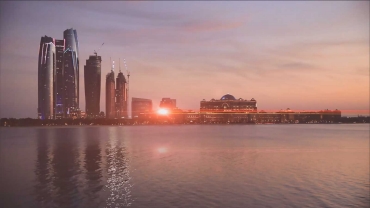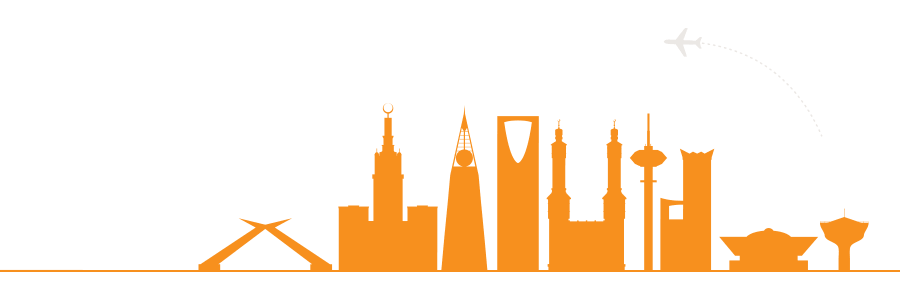
Download as a PDF
Last year we presented and explained the impact of five global megatrends on Middle East’s hospitality and tourism industry. We looked at the long-term implications of changing demographics, the shift in global power, urbanisation, climate change and technological breakthroughs and shone a light on the future strategic opportunities and threats they bring.
As a region, we are right at the epicentre of these global megatrends – we do not have the luxury of delaying the response to the challenges created by these trends. They are not something for the next generation to address nor can they be tackled using the modes of thinking and acting that have brought us to this point – however farreaching and effective they may have been. The landscape has changed too dramatically.
ADAPT helps us focus on the near-term manifestations of the trends and the challenges facing industries. The hospitality and tourism industry is an industry that is widely affected by the ADAPT elements; asymmetry, disruption, age, populism and trust. As these elements interact and reinforce each other, we see important new implications on hospitality.
Common regional approaches are becoming very difficult, if not impossible. Countries in the Middle East are becoming ever more differentiated – even within the GCC – with very different levels of maturity, different focus areas and different challenges.
The lag in companies’ implementation of digitisation strategies in the region means that technological disruption is now starting to hit the hospitality and tourism sector hard.
Lower oil prices mean that diversification is moving at a full speed ahead, opening up enormous opportunities in the hospitality and tourism industry – but the risks facing investors are significant and hard to calculate.
The region’s geographic position and its success in positioning itself as a global hub for tourism means that there is an ever wider diversity – in culture, age and expectations – in the kind of visitors it caters to.
Urgent challenges caused in response to the megatrends
Around the world there is a growing disparity between a small wealthy elite and a growing cohort of citizens who are angry at or disappointed in their inability to enjoy the life they expected. The Middle East, as a region, has the highest share of inequality.
While the inequality is largely accounted for by differences across the region, even within countries – and even among citizens – there is growing wealth disparity that is nurturing social tensions. The greatest challenge is among the large number of young nationals that are unable to find a job. Over 30% of Saudis aged below 25, and over 50% of young Omanis are unemployed. In response, governments are trying to diversify the economy, nurture a job-creating private sector, realise targets to replace expat workers with nationals, improve local skills and provide access to affordable public services and housing.
Globally, travel and tourism is the largest employment generating sector in the world. In the region, Dubai has shown the economic potential of tourism when policies are prioritised and stakeholders are well aligned. Although occupancy rates have come down from unsustainable high levels (upper 80%) to ones that match other global locations, the fast growth build-up to the Dubai Expo in 2020 will not create a bubble like the one in 2008/09. This is because Dubai has put a comprehensive framework in place around its iconic hotels and other hospitality assets, fortifying demand through largescale investment into business, leisure and MICE products.
Saudi Arabia now actively pursues the potential of hospitality and tourism to build private-sector momentum in and around the industry and create jobs. Religious tourism is already very strong. In addition to 1.8 million foreign and domestic Haj visitors, Saudi Arabia attracts around 6 million international Umrah visitors in 2016.
The aim is to increase this number to 15 million by 2020 and 30 million by 2030. The country also has a rich wealth of cultural and natural heritage assets, but few visitors stay to enjoy them or spend money in the country. In order to boost businesses and jobs by developing leisure tourism, as the National Transformation Plan envisions, there needs to be a clearer consensus around the country’s positioning as a tourist destination, there also needs to be alignment around policies and investment in order to build up a future-proof industry.
For investors and policy-makers in Saudi Arabia putting tourism at the heart of successful diversification, a clear focus on what tourism will look like in the future is required - not just piecemeal changes and opportunistic developments. Is the country going to focus on heritage tourism, on beach resorts or on leisure & entertainment assets? Will immigration and visa processes be transformed to encourage tourism or will the country remain difficult for visitors to enter? Will the focus be on international or domestic tourism? And will nationals be encouraged to develop a service mindset so they can be employed in large numbers across the tourism sector?
Sources:
1 General Authority for Statistics, Kingdom of Saudi Arabia
2 The Ministry of Hajj and Umrah
Disruption has become a central dynamic of today’s global economy, as breakthrough technologies redefine business models, blur the borders between different industries, create agile new players unencumbered by legacy organisations and destroy others that fail to adapt quickly enough. Airbnb, for example, now has 4 million listings in 65,000 cities. Founded just a decade ago, its annual revenues are estimated to be $2.8 billion. That’s higher than the world’s sixth largest hotel group.
A growing number of companies in the Middle East are studying what has happened to their peers around the world and preparing for the onslaught by creating new digitisation strategies and making alliances with agile start-ups. But a weak private sector along with a restricted archaic and protectionist regulations, have held back large-scale digital transformation, despite the potential created by young, tech-savvy populations with access to good digital infrastructure. That is now changing very quickly.
Large local players are focusing on on how to use end-to-end digital technology to facilitate the guest experience. Not only is this a big and expensive undertaking if not done on a global scale but it also lacks regulatory certainty, especially around key questions such as how the collected data should be protected and who is liable if it falls into the wrong hands.
Governments in the region are catching up. When Airbnb was blocked in Dubai due to prohibitions on sub-letting, for example, the government found a way to work around it to legalise rentals using a holiday homes category. That delay means that even the region’s most advanced markets are still at least two years behind leading hospitality markets, but as regulations fall into place, our region is likely to move very quickly - possibly overtaking other markets.
Disruption is not only caused by technology. The impact of resource scarcity and climate change might turn out to be the most disruptive force shaping tourism in the Gulf and beyond in coming decades. Luxury hotels across the region boast rain showers, for example, as if water was abundant. But Gulf countries consume vast amounts of energy to produce water - and climate change makes the situation even less sustainable both directly as weather patterns change and indirectly as global regulations tighten. Studies undertaken by the UN World Tourism Organisation identify the Middle East as the region most susceptible to water scarcity and warmer summers due to climate change. How long will it be before Dubai or Saudi Arabia is faced with the kind of water-use restrictions Cape Town is currently imposing, with tourists asked to restrict showers to 90 seconds and swim in the sea rather than in pools? Now is the time to think how the hospitality industry can become sustainable as it grows; a shift that requires alignment from governments, hotels, tourist facilities and the tourists themselves.
Companies in the hospitality and tourism sector are starting to confront the reality of how their businesses will need to change in order to thrive in a digitised future
The world is facing twin demographic pressures. The population in most countries is ageing, but many fast-growing markets are dominated by a youth bulge that will play out over the next few decades.
The demographic shift in tourism is affected by the growing importance of silver tourism (the tourism of the elderly) as well as the more frequent travel of tourists from emerging countries, coupled with increasing mobility, which means that the tourism industry locally and globally will witness greater diversity. That shift is already shaking up more mature tourism markets. Dubai, for example, is attracting increasingly diverse groups of tourists, with a 41% increase in Chinese tourists in 2017. The industry is under pressure to find the right balance between traditional tourism concepts that attract families and older tourists, while also developing more experiential and differentiated concepts to attract young travellers and catering to first-time tourists from new regions.
The Gulf region itself is undergoing rapid change as governments attempt to cope with the challenges brought by a population where over 60% is below the age of 30. The young population, especially in key markets such as Saudi Arabia, is increasingly worried that they are losing the privileges of their parents’ generation – they want a good education, high-paying jobs, and access to cheap utilities, housing and healthcare. They are happy to use Twitter to express their discontent if they feel the government is not listening.
Source: Dubai Department of Tourism & Commerce Marketing (DTCM)
For the regional hospitality, tourism and real estate industries, these demographic pressures bring a wide range of both opportunities and challenges. Saudi Arabia’s Crown Prince, Mohammad Bin Salman, has responded to young people’s call for more entertainment, sport and tourism, opening up huge potential in everything from theme parks to cinemas. But it will take careful and managed transformation to get the positioning right and avoid mixed messages. Does a Red Sea resort sit well with heritage and religious tourism? What is needed to appeal to family tourists? How will theme parks operate in Saudi Arabia?
Another important factor is that the tourism and leisure industry can serve as an enabler for job creation and diversification. For it to play that role, two foundations are needed. First, companies must be able to nurture a stable, service-minded workforce. In the short term, while growing the local talent base needed, that means attracting thousands of young expat workers and building affordable housing for them. But that can’t be a long-term solution – there has to be a concerted effort to change mind-sets in the region so that young nationals are happy to train and work in service industries at all levels. That still sounds unthinkable, but the combined pressures of asymmetry, age and disruption means there is no choice but to get the population working in sectors that will drive growth. That effort needs to start now.
The second foundation for building a healthy job-creating industry is the development of entrepreneurs and small businesses in the tourism and hospitality sector; something still limited across the region. This will require a broad range of initiatives, from supportive laws and regulations, to better funding, tax advantages and incubators.
After decades of growing openness to international trade, investment and skills, countries are increasingly turning inwards, discouraging immigration and outsourcing, while pushing companies to invest and create jobs locally. As a result, conflicts are growing between foreigners and locals, between young and old, as well as between those that embrace modernisation and globalisation and those who resist it. Countries are increasingly defining themselves in terms of national identities.
In the Middle East, the challenges of populism, nationalism and identity are turbo-charged. Security issues are always a policy driver, tribal identities remain strong and, in the Gulf countries at least, expatriates make up a large portion of resident populations – ranging from a low of 37% in Saudi Arabia to a high of 89% in the UAE.
Source: Gulf Labour Markets and Migration, 2017
Source: Department of Tourism and Commerce Marketing
Despite these common factors, countries in the region have responded differently – and that is shaping the potential for the development of tourism. Saudi Arabia has only recently and in a very limited fashion become open to non-religious tourists and large-scale foreign investment, while Dubai has turned itself into a global hub, attracting 15.8 million international tourists in 2017.
Lack of trust in institutions and technology is making it harder for governments and businesses to act globally, while accelerating the spread of new peer-to-peer and social media based institutions. In the Middle East, these same trends are exacerbated by the immaturity of institutions in young states and the dependence on individual leaders to get things done.
Where leaders are highly trusted, an atmosphere of confidence pushes the pace of change and encourages investment, while maintaining social peace and a high level of security. The challenge now is to build future-focused institutions that can help to guarantee continued progress as a new generation play an ever great role.
For the tourism and leisure industry, moving towards greater trust in a national vision and consensus is essential for continuity and growth. There is confidence that Dubai will remain open and transparent, since so many national interests have a stake in that vision.
Elsewhere it is less clear. Oman’s focus on low key luxury tourism is associated with Sultan Qaboos whose successor is not yet determined. Even more so, initiatives such as Saudi Arabia’s Neom or Red Sea project is associated with the Crown Prince and not part of a transparent national consensus on the future of the country’s tourism.
The challenge now is to build future-focused institutions that can help to guarantee continued progress as a new generation play an ever great role
ADAPT brings forth both opportunities and challenges to the Middle East. Below are some methodologies the Middle East can use to address these challenges, mitigate the possible risks that may arise and embrace the wave of change that is happening now.

Dr. Martin Berlin
Real Estate, Hospitality & Leisure Leader, Deals, PwC Middle East
Tel: 971 4 304 3182



